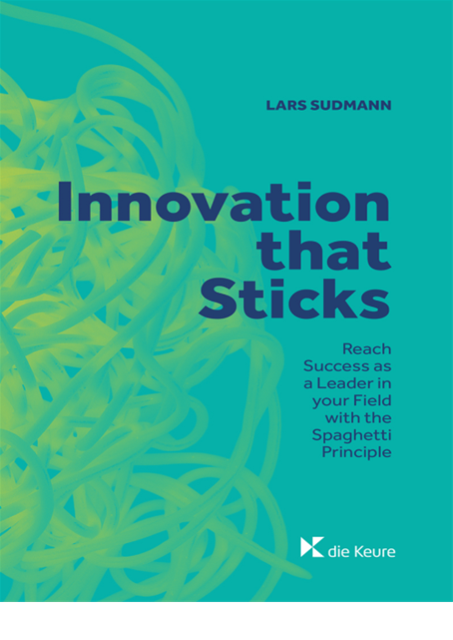Millions of meetings are being held every day. Some people love them, but for too many the following statement holds true: “A meeting is an event where minutes are taken and hours are wasted.”
As a conference presenter I work a lot with the event industry. And this industry has an interesting metric: Event ROI.
Naturally, if you bring thousands of people together for a mega event with multi-million budgets, you want to know what the Return on Investment (ROI) is.
Naturally, as a manager, if you bring together 20 people for a meeting, you want to know what the ROI of that meeting is.
Wait…not really. I rarely hear that question being asked. Actually, in many organizations at most there is more discussion whether or not there is money to pay for the coffee for the meeting rather than if the meeting should be held in the first place.
In a time of high employee hourly cost this is not good. I therefore believe every leader should look at Meeting ROI.
For business meetings, an ROI formula could look like this:
**********************
Meeting return = (Direct business & customer impact) + (Organizational learning)
Divided by
Meeting investment = (Time to prepare the meeting) + (Time to conduct the meeting) + (Meeting room cost & travel expenses)
**********************
Let’s start with the easier part of this equation, the three investment elements.
Investment element: room cost & catering & travel expenses
Even if it’s 10€ (or whatever other currency equivalent) per person, it’s a neglectable cost in the grander scheme of things.
But interestingly, this is what often gets most of the cost attention. (“What, the meeting room costs 200€????”). Let’s assume this 200€ for our example meeting of 20 people plus some travel expenses of 800 € to come to a round 1.000€ for this investment element.
Investment element: Meeting time investment
Let’s assume the average full cost of your meeting participant is 100€ per hour including social security, pension, and so on. 20 people for the 2h meeting lead to 4.000€ conduction cost in our example.
Some of you might say, “ah well, the people have to work anyway so it’s not a true cost…”; but that is only true to a certain extend, especially if you are responsible for the full organization and if you know that many office workers spend more than 40% of their time in meetings.
Do the following thought experiment instead: If you knew that all of your people were freelancers and you would pay them by the hour, would you still hold that meeting? If you have just a slight hesitation, don’t have the meeting.
Investment element: Preparation time
Now here is the real hidden cost of meetings. A 20-minute presentation can easily require five or more hours to prepare. This presentation is then sometimes being reviewed by five other individuals in the line management for hours; another pre-meeting by three people is being set up where people argue and change everything a day before the meeting…and so on, and so on.
In our example, this alone can lead to, for instance, 1.800€ allocated full cost for this one presentation. If it’s then assumed that there are five presentations during the meeting we easily come to +/- 9.000€ fully loaded cost for our example meeting.
Return: what is the true outcome of a meeting?
Giving a monetary figure for outcome is of course more tricky. However, we can approach it from a reverse angle: As for any ROI, I suggest it should be three to five times of what was invested in.
So for your example meeting that cost 1.000 € (coffee & room & travel) + 4.000 € (time spent) + 9.000 € (preparation time) in full cost = 14.000 € allocated, has it had a value creation impact of 40.000-70.000 €?
You should be able to answer this question with a full-hearted YES. If not, have a turn around and approach and boost the ROI further with e.g. the following ten strategies.
Meeting ROI boosters:
- Return booster: Quantify the business / customer impact. Ask yourself and all of your team members afterwards: “How much have we helped bring the business further?” Give yourself a score from 1 (“what is a customer”?) to 10 (“We just closed another deal with this”). Track it over time.
- Return booster: Quantify the organizational learning. Answer the following question: “Have we learned something new today?” and give yourself a score from 1-10 and track this over time.
- Return booster: Objective alignment: Same as American Express’s VP Christopher Frank, ask everybody at the beginning of your meeting: “In 5 words or less, what is this meeting about?”
- Investment booster: Full water meetings: Catherina Fake, co-founder of Flickr, uses the following short trick for efficient meetings: Everybody has to drink a full glass of water before the meeting. The meeting stops when nature calls and the first person has to leave the room. Ensures efficiency and short meetings.
- Investment booster: Avoid “Meetnapping”, i.e. the tendency to kidnap people to attend a meeting that is useless for them. Ask everybody: “What is your role here?” and apply Jeff Bezos’ two pizza rule: Only have as many people in a meeting that you can feed with two pizzas.
- Investment booster: Have people align on messages, not on slide decks: Too often, the message and the thinking needs to be aligned much more than the overall presentation. So during preparation time first share key messages (e.g. the five key bullet points) with your team. Only once you have aligned those move on to the writing/deck creation.
- Investment booster: Use writing instead of slide decks: Amazon and others have banned PowerPoint from meetings. I, too, was trained by P&G’s one-page memo culture which used to push people to condense one’s thinking onto one page. If you cannot express it on one page you have not understood it properly. And learn to write fast: With practice and a standard structure one should be able to write a good one-page analysis in 20-30 minutes.
- Investment booster: Announce that you tolerate and even expect ambiguity & discussion: Have people ready with their fact books and their knowledge but not with endless polished versions of the truth in PowerPoint.
- Investment booster: Measure the ratio of information sharing vs. discussion & creation. The former can also be done by email. The latter is what is the real added value of a meeting, therefore there should be at least a 50/50 ratio.
- Investment booster: Streamline information sharing with innovative presentation formats. Have your status updates done in ten minutes, by for instance having two PechaKucha or Ignite-style updates. 20 slides, 15 seconds per slide, first presentation done after five minutes. No ifs and buts.
Get into ROI thinking for meetings
We do not have to do a full analysis every short and spontaneous meeting. However, for the truly important ones it makes a lot of sense in my view. And in times where coordination and alignment in organizations is key and meetings make up a large part of every professionals life it is worthwhile to take a step back and analyze the overall organisational impact and ROI of meetings.
Lars Sudmann is an expert on high-performance leadership in global corporations. You can contact Lars to work with you as change consultant or keynote speaker & workshop facilitator for your next event. You can also follow Lars here and on Twitter.
Images credit: Shutterstock.com.





